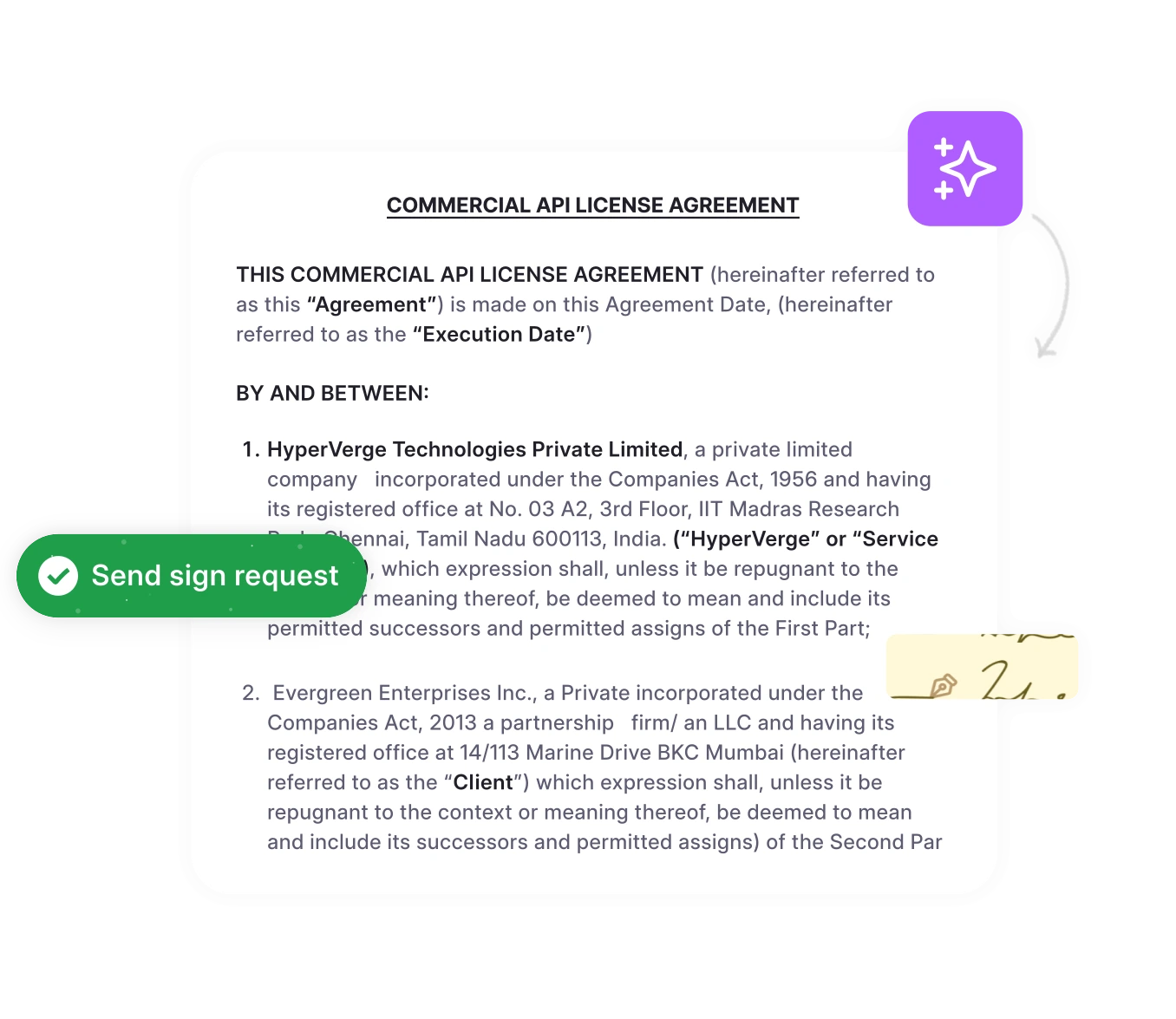The Mirror Image Rule determines when an agreement becomes legally binding. It states that an acceptance must exactly match the terms of the offer; any change or addition renders it a counteroffer, rather than a contract.
This rule is relevant for a broad audience:
- Law students and bar exam candidates must understand it for its definitions, case law, and exam scenarios.
- Business professionals and contract managers utilize it to ensure that agreements are clear and enforceable, thereby avoiding disputes during negotiations.
- Legal practitioners and researchers refer to it when analyzing contract validity, exceptions, or modern applications under statutes like the Uniform Commercial Code (UCC).
Understanding the Mirror Image Rule helps you know when a contract is truly formed, how to handle counteroffers, and why exact acceptance matters — whether in academic, professional, or business settings.
What is the mirror image rule?
The Mirror Image Rule is a key principle in contract law that requires an acceptance to mirror the terms of the offer exactly. If the acceptance changes, adds, or omits any terms, it is considered a counteroffer rather than a valid contract.
Alternate Names:
- Absolute Acceptance
- Unequivocal Acceptance
- Meeting of the Minds
Why it matters for contract validity and clarity
The mirror image rule matters because it determines when a contract is legally binding. Without it, parties could assume an agreement exists even when the acceptance changes key terms, leading to disputes, misunderstandings, or unenforceable contracts. By following this rule, both parties know exactly what they are agreeing to, which is crucial for business deals, property transactions, service agreements, and legal compliance.
Example:
Suppose Stefen offers to sell his laptop to Alex for $500.
- If Alex replies, “I accept your offer,” a valid contract is formed because the acceptance mirrors the offer exactly.
- If Alex replies, “I accept, but only if you include a laptop bag,” this is not a valid acceptance. Instead, it is a counteroffer, and no contract exists until Sarah agrees to the new terms.
Never worry about contract errors again.
HyperStart ensures every acceptance mirrors your offer, preventing disputes and saving time.
Book a DemoLegal basis and historical origin of the mirror image rule
The mirror image rule comes from common law, which is based on court decisions and established legal principles. Its purpose is to ensure that a contract is formed only when the acceptance matches the offer exactly, thereby providing certainty in contract formation.
Key historical cases illustrating the rule:
- Hyde v. Wrench (1840, UK): Wrench offered to sell a farm for £1,200. Hyde countered with £950. Wrench refused, and Hyde later tried to accept the original offer of £1,200. The court held there was no contract because Hyde’s counteroffer had canceled the original offer.
- Adams v. Lindsell (1818, UK): The court ruled that an acceptance is valid once posted, even if it arrives later than expected. This is known as the postal rule, which highlights how the timing of communication affects the formation of a contract.
Differences between UK and US approaches:
- In the UK, courts strictly enforce the mirror image rule: any change is a counteroffer, and acceptance must match the original offer exactly.
- In the US, the Uniform Commercial Code (UCC §2-207) allows some flexibility for the sale of goods. Minor changes in acceptance may still form a contract if they do not materially alter the original offer.
“The UCC does not follow the mirror-image rule. Additional or different terms included in the acceptance of an offer may become part of the contract.”
Read
How the mirror image rule works
The mirror image rule is a fundamental principle in contract law that ensures a contract is formed only when the acceptance exactly matches the offer. Any changes, additions, or omissions in the acceptance are treated as a counteroffer, and no binding contract exists until both parties agree on the new terms.
Here’s how it works in practice:
1. An offer is made
The process begins when one party proposes specific terms for a contract.
- Example: Alex offers to sell his car to Jordan for $10,000. This offer includes all key terms: price, model, and delivery date.
2. Acceptance must mirror the offer
For the contract to be valid, the other party must accept the offer exactly as it is presented.
- Valid acceptance: Jordan replies, “I accept your offer to buy the car for $10,000.” The acceptance mirrors the original offer, creating a legally binding contract.
3. Counteroffers occur when terms change
If the offeree changes any term of the offer, it becomes a counteroffer rather than an acceptance. The original offer is no longer valid unless the offeror agrees to the new terms.
- Example: Jordan replies, “I accept, but only if Alex includes a full tank of gas.” This is a counteroffer, not a contract. Alex must agree to a binding agreement to be effective.
4. Legal effect of counteroffers
When a counteroffer is made:
- The original offer is terminated.
- The offeree cannot later accept the original offer unless it is renewed by the offeror.
- This prevents disputes by clearly defining which terms are legally enforceable.
5. Timing of acceptance
In some cases, the timing of acceptance matters, especially when communication is by post or email:
- Postal rule example: Alex sends an offer to Jordan via postal mail. Jordan posts his acceptance the next day. Under traditional common law, the contract is valid once the acceptance is mailed, even if Alex receives it later.
- Modern application: For emails or electronic contracts, the same principle generally applies: acceptance is effective once sent, unless the offer specifies otherwise.
Practical applications
The mirror image rule is used in many real-world scenarios to ensure clarity and prevent disputes:
- Business contracts: Service agreements, supply contracts, or sales agreements require exact acceptance to be enforceable.
- Property transactions: Offers to buy or lease property must be accepted without modification to form a valid contract.
- Digital agreements: Even online contracts follow this rule; acceptance must reflect the offer exactly for the contract to be binding.
Example under UCC (US law)
In the United States, the Uniform Commercial Code (UCC §2-207) allows some flexibility for contracts involving the sale of goods:
- Example: Alex offers to sell 100 laptops to Jordan for $50,000, with delivery in two weeks. Jordan accepts but requests delivery in three weeks. Under the UCC, this minor modification does not prevent the contract from forming, provided that the change does not materially alter the terms of the offer.
- This shows how modern statutes adapt the mirror image rule for commercial practicality, especially in transactions between merchants.
The assent to the proposal must consequently be unequivocal and unqualified and essentially a ‘mirror image’ of the offer. This principle ensures that acceptance and offer are the same to create a legally binding contract, avoiding ambiguity and disputes about contract terms.”
Read
Exceptions and modern modifications to the mirror image rule
While the mirror image rule is a fundamental principle of contract law, several exceptions modify its application in practice, particularly in commercial transactions.
Exception 1: UCC modifications for the sale of goods in the US
In the United States, the Uniform Commercial Code (UCC §2-207) relaxes the strict mirror image rule for the sale of goods between merchants. Minor changes or additional terms in the acceptance may still form a valid contract as long as they do not materially alter the original offer. For example, a seller may offer 200 units of a product at $5,000 with delivery in two weeks. If the buyer accepts but requests a one-day delay in delivery, the contract remains valid under the UCC because the change is minor.
Exception 2: Offers that require acceptance on original terms only
Some offers explicitly state that acceptance must occur only on the original terms. In such cases, any modification, no matter how small, becomes a counteroffer. For instance, a software company might offer a subscription license “only if accepted exactly as specified.” If the buyer tries to change the payment schedule, it will be considered a counteroffer rather than a valid acceptance.
Exception 3: Digital contracts and minor variations in acceptance
With the rise of electronic contracts, e-signatures, and automated platforms, minor variations, such as formatting changes or clarifications, may be considered valid acceptance. This ensures efficiency in digital transactions without negating the core principle of the mirror image rule.
Under the common law mirror image rule, an acceptance must exactly match the terms of the offer; otherwise, it acts as a counteroffer, and no contract is formed. However, UCC Section 2-207 provides a more flexible approach for contracts involving the sale of goods, allowing an acceptance with additional or different terms to create a contract still, unless those terms materially alter the original offer.
Read
How HyperStart helps enforce the mirror image rule in contracts
For users of HyperStart – contract management software, understanding the mirror image rule is critical to ensure that every contract is clear, enforceable, and accurately reflects the agreement between parties. HyperStart’s platform is designed to prevent misunderstandings, track changes, and enforce exact acceptance, helping businesses manage contracts efficiently.
- Clear contract terms: HyperStart allows teams to draft, share, and review contracts with complete visibility. This ensures that the acceptance matches the original offer exactly, preventing accidental counteroffers.
- Avoid disputes: By tracking every modification and highlighting differences between offers and acceptances, HyperStart reduces the risk of contract disputes arising from misunderstood terms.
- Digital acceptance made simple: Whether contracts are signed via e-signature or approved digitally, HyperStart ensures that acceptances are recorded exactly as offered, enforcing the mirror image rule automatically.
For example, if a company sends a service contract to a client, and the client suggests a minor change, HyperStart flags this as a counteroffer. Both parties must approve the updated terms before the contract becomes binding.
Simplify contract approvals in minutes
Track changes, manage acceptances, and enforce agreements effortlessly with HyperStart.
Book a Demo











